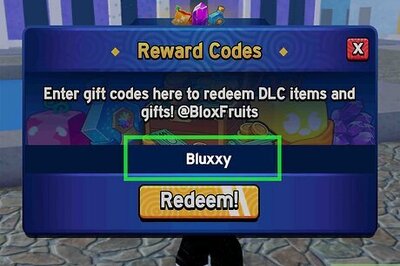
views
- Hook your recipient right away with an engaging subject line. Words like “urgent” let them know that some type of action needs to be taken.
- Maximize engagement by mentioning the exact date and time you need the recipient to reply or act by.
- Make the email as short and concise as you can so the recipient doesn’t have to skim through much.
- Mark an email as high priority with Microsoft Outlook so it physically stands out in the recipient’s inbox.
Create an eye-catching subject line.

A compelling subject line motivates the recipient to open your email. Include words and phrases like “Urgent” or “Approval Needed” so the reader knows that your message is serious and/or time-sensitive. If applicable, include a specific deadline in your subject line, too (like “Reply by Nov 3”). The more compelling your subject line is, the quicker the recipient will open up your email and start reading—which is exactly what you want! Urgent: Signature Needed by EOD Feedback Required: Respond By Friday Don’t Miss It! Clearance Sale Ends Jun 30
State the purpose right away.

Front-loading the purpose highlights its importance. Have a big meeting coming up? Need to remind someone about a big sale on the horizon? Whatever your big news is, mention it right off the bat. Your recipient doesn’t want to (and probably won’t!) skim through multiple paragraphs of filler to get to the bare bones of your message. “Please reply by the end of the day with your signature attached to this form.” “Give me a call by March 11th if you’re still interested in interviewing for this position.” “Use discount code FALLVIBES by the end of the weekend to save up to 40% on your order.”
Specify a deadline.

Include specific dates and times rather than using words like “ASAP.” List as many relevant details as you can about the deadline, including any important dates or times—that way, there’s no confusion about when something needs to be done. Feel free to use acronyms like EOD (End Of Day) and PRB (Please Respond By) to make your request more skimmable. “Please give your $10 donation to Levi or Glenn by EOD this Friday, since they’ll be buying Mycah’s retirement gift over the weekend.” “PRB Dec 10 if you can attend the meeting.” “Spend $50 by the end of the weekend to get free expedited shipping on your next order.”
Motivate them with scarcity tactics.

Phrases like “limited stock” and “almost gone” may inspire the reader. FOMO (Fear Of Missing Out) is a powerful marketing tactic—when people feel like something is nearly unavailable, they’ll feel more motivated to take action. Sprinkle a couple of compelling words into your email and see what kind of response you get. “Only 20 spots are left for next weekend’s conference.” “This one-day sale ends on Friday.” “Our seasonal special is back for a limited time only!”
Stick with simple, direct, and concise language.

Research shows that simple and concise language gets you better results. Stick with clear, easy-to-understand language that the reader can skim through quickly. The sharper, simpler, and more to-the-point your wording is, the more likely it’ll get responded to. “The meeting starts at 10 AM and ends at 10:30 AM” is a lot easier to skim and read than “The assembly will commence at 10 AM and adjourn at 10:30 AM.” Try to keep your email about 280 characters long (the same length as a Twitter post). This lets you highlight the important aspects of your request without taking up too much of the reader’s time.
Include an obvious call to action.

Add links or attachments that help the recipient complete the task. Need your co-worker to give you a phone call? Drop your phone number at the end of the email so they know where to dial. Want your customers to fill out a quick survey? Include a link to the form in your message. The more tools you include in the email, the quicker the recipient can follow through. “Thanks so much for attending our webinar! Please fill out this anonymous feedback form by EOD Tuesday.” “Click the link below to apply the promo code to your next order.”
Mark the email as urgent with Microsoft Outlook.

Tagging an email in Outlook highlights the message in a person’s inbox. Click or tap on the “New Email” button in your Outlook account. Then, go to the “Tags” option on the upper ribbon—you can click either “High Importance” or “Low Importance.” High-importance emails are labeled with a red exclamation mark, while low-importance emails are marked with a blue arrow pointing down. Unfortunately, you can’t set outgoing mail as high-priority or urgent with domains like Gmail or Yahoo Mail.
Send a follow-up email if you don’t hear back.

Include the deadline in your reminder for the person’s reference. Depending on the deadline or urgency of your request, give the recipient a few days to read and respond/act on your message. When you write your follow-up email, make sure that the deadline and call to action are clear, but keep your message light and friendly in the process. “Hey Clara! I just wanted to follow up and see if you could fill out the employee feedback form by the end of the day. Thanks so much!” “Don’t miss out! Our promo code expires in 24 hours, so be sure to check out the great deals before then!”
















Comments
0 comment